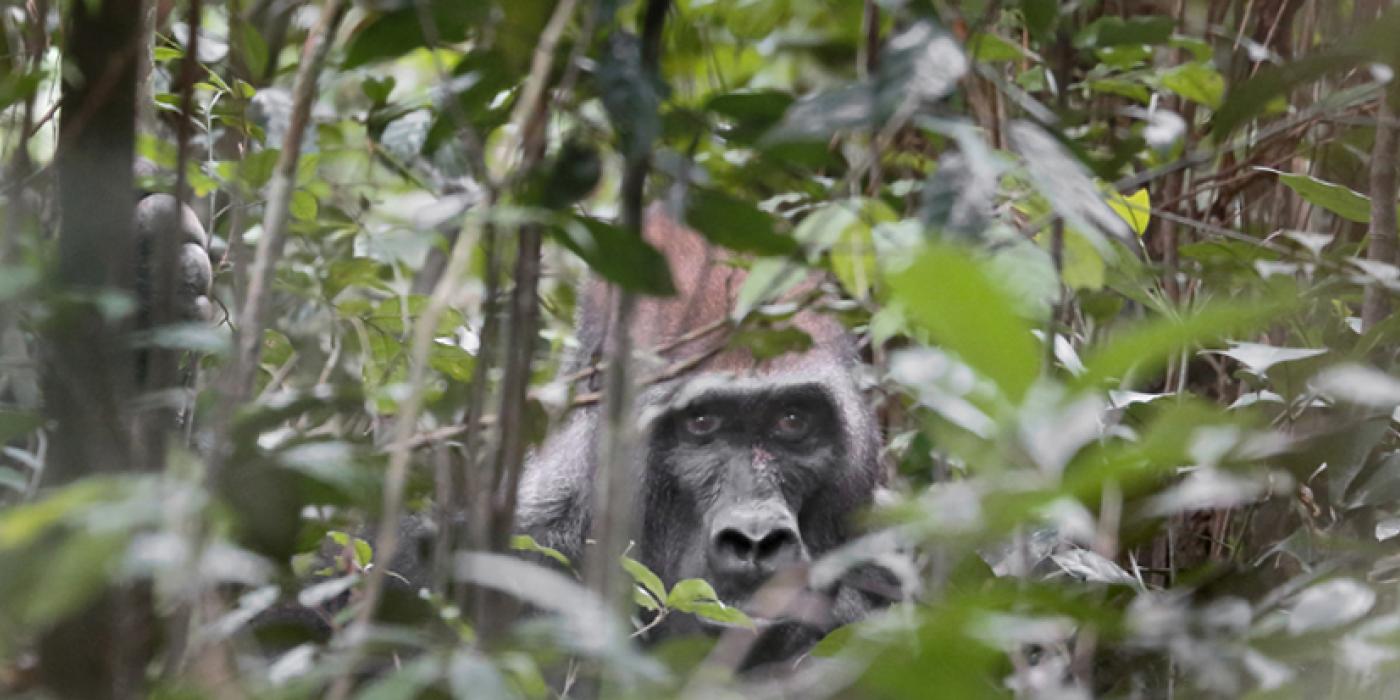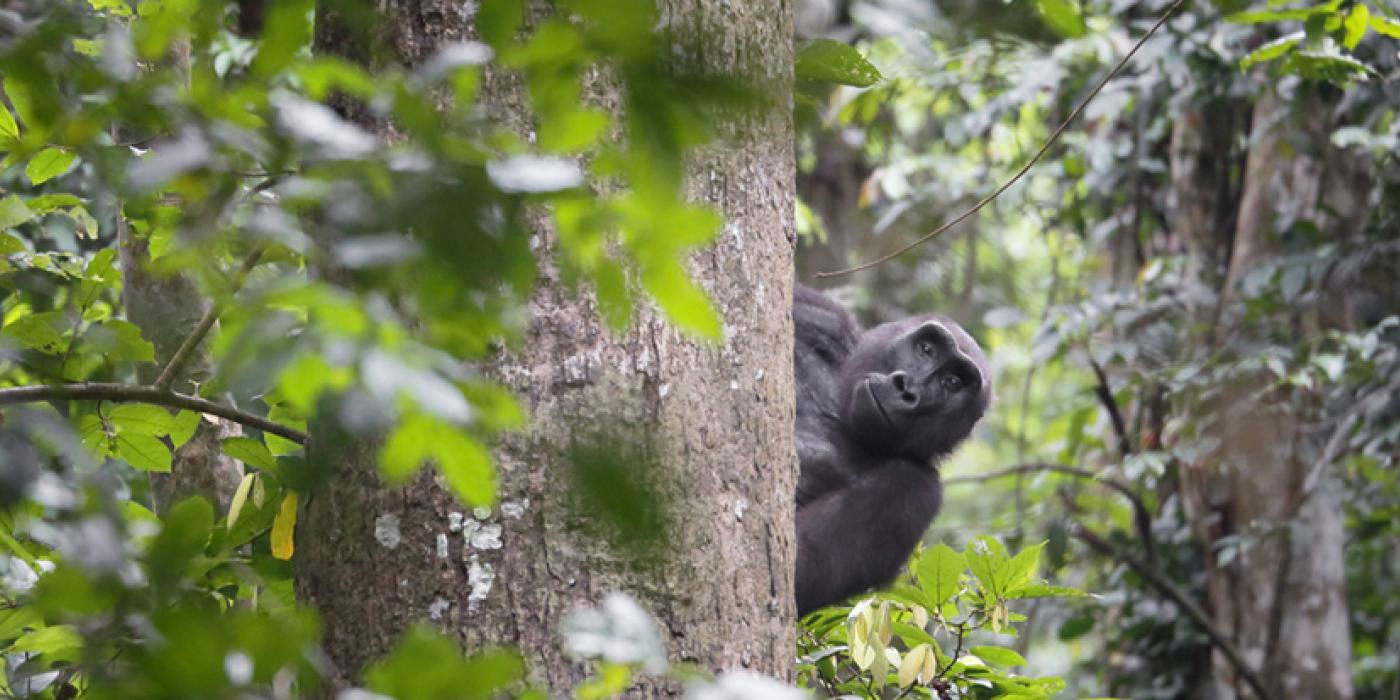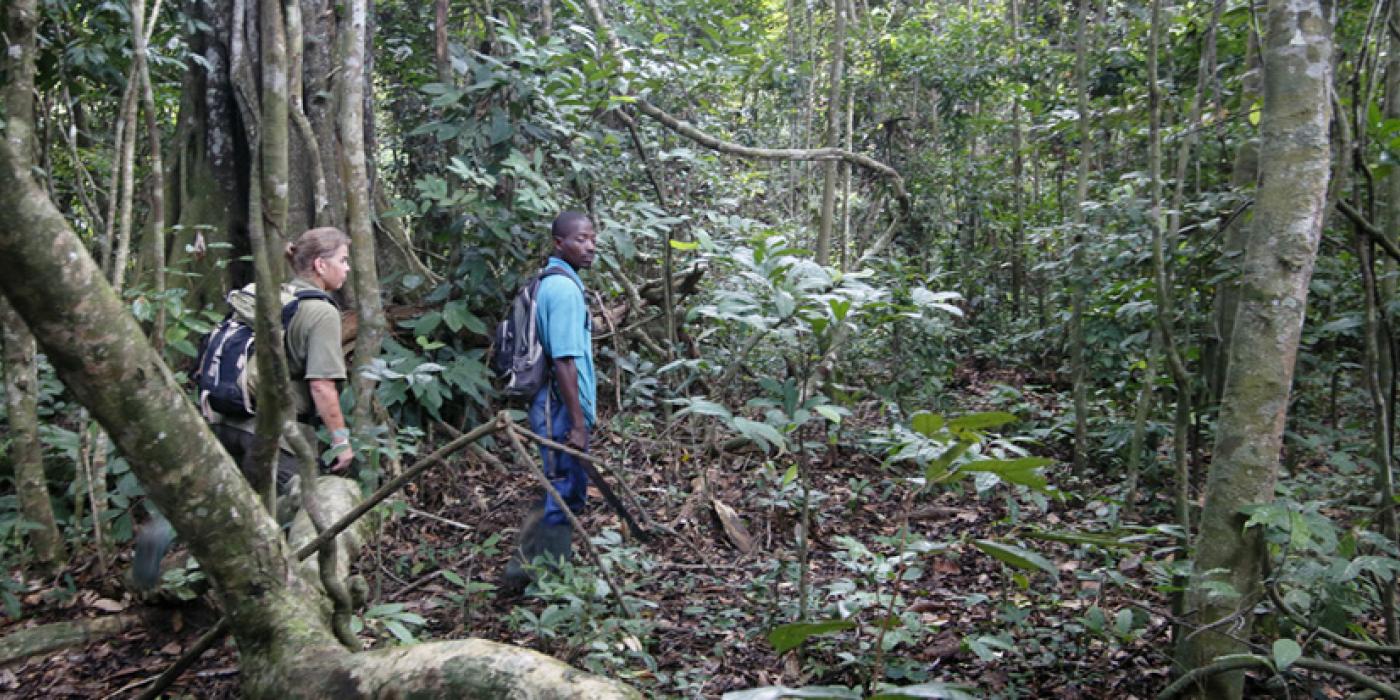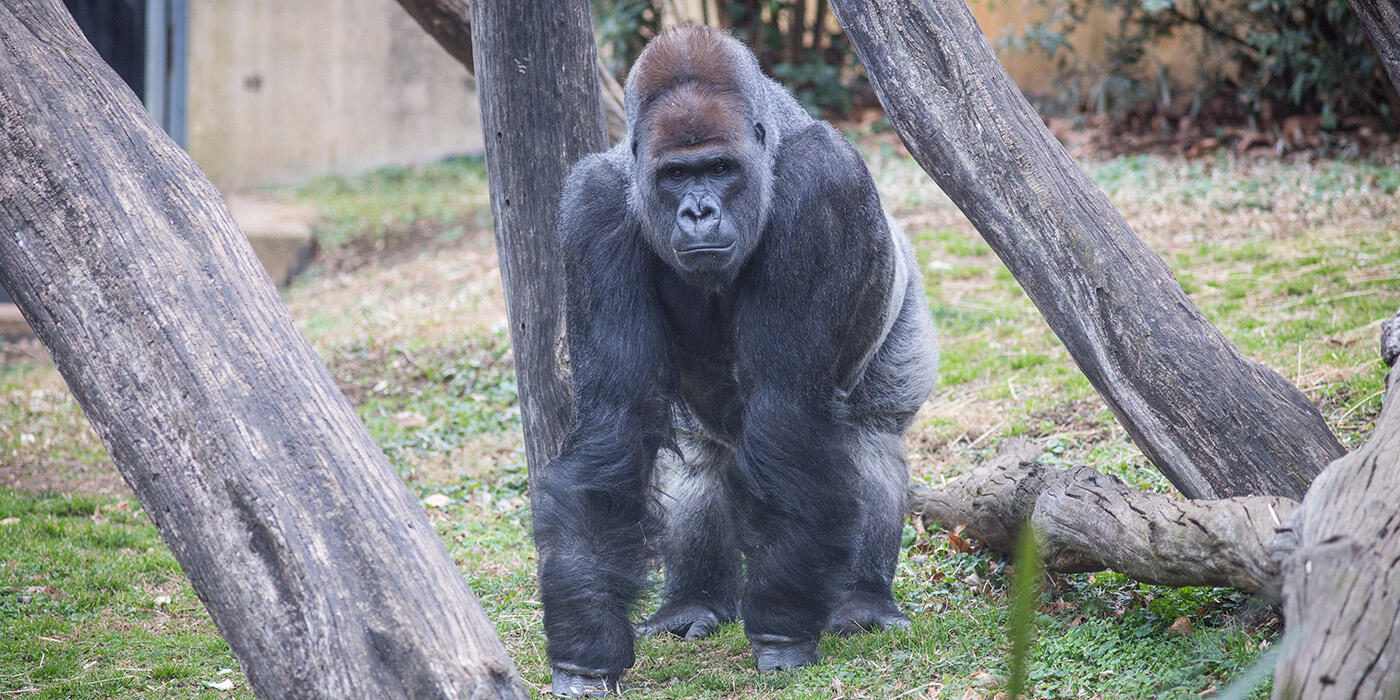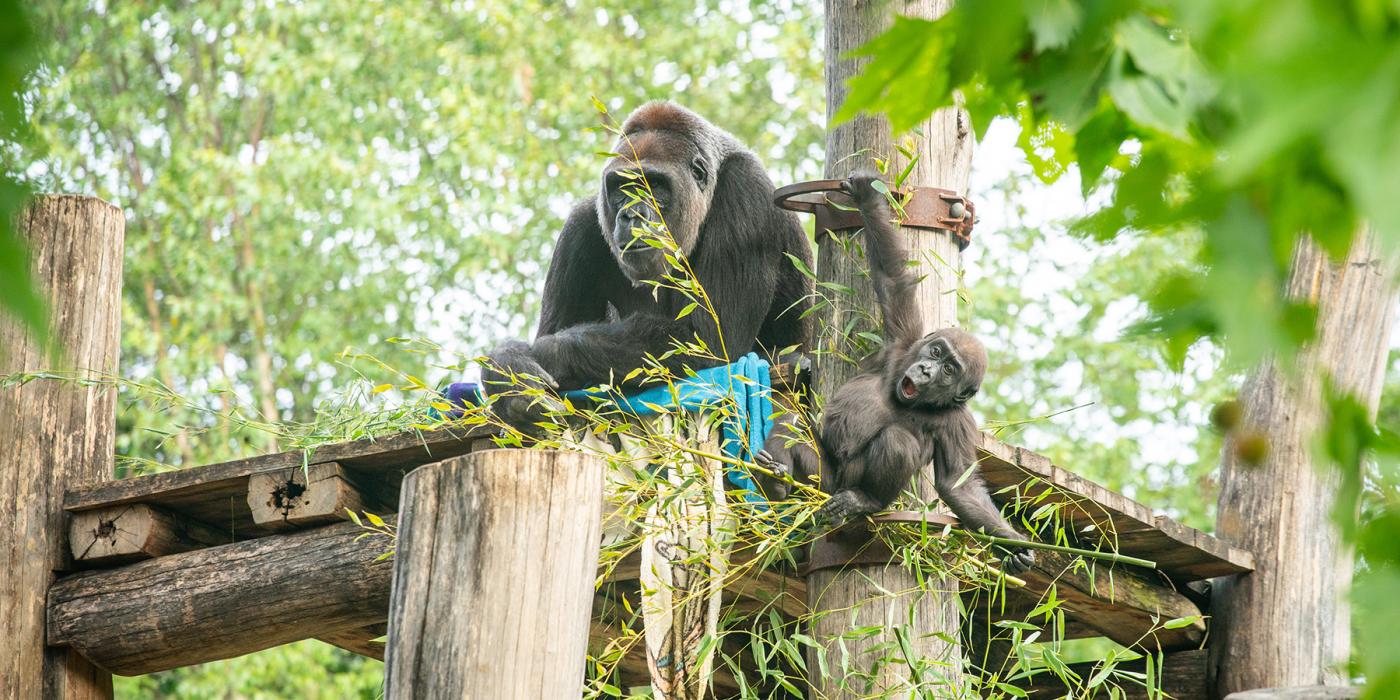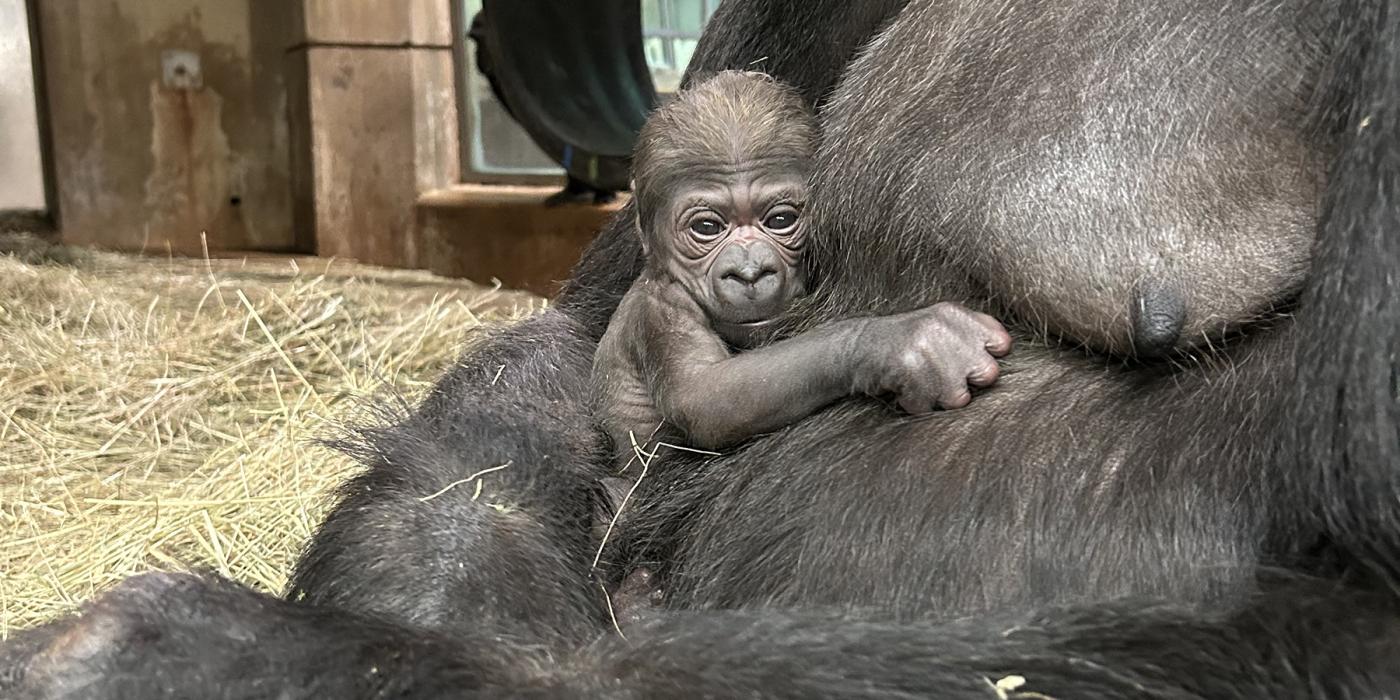A Primate Paradox: Keeping Wildlife Wild Through Habituation And Eco-Tourism
What is it like to see a gorilla in the wild? Get a glimpse of gorillas on their own turf, thanks to our Gabon Biodiversity Program (GBP). In Gabon’s National Parks, Smithsonian Conservation Biology Institute (SCBI) scientists have teamed up with local experts to habituate western lowland gorillas to the presence of human observers. SCBI-GBP program manager Angelique Todd walks us through her world of wild gorillas in this Q&A from the field.
This story appears in the August 2016 issue of National Zoo News. All photos courtesy of David Korte.
Why is the Smithsonian in Gabon?
As part of the Gabon Biodiversity Program (GBP), Smithsonian Conservation Biology Institute (SCBI) scientists have teamed up with the Government of Gabon, local scientists and Shell Gabon to study 1.1 million-plus hectares in the Gamba Complex of Protected Areas, including the wildlife that inhabit them. Through the technical expertise of GBP’s Program Manager, who also works as the coordinator for great ape habituation and tourism projects for Gabon’s National Park Agency, one activity is to facilitate the training of the guides and trackers who are habituating gorillas for eco-tourism in Loango and Moukalaba Doudou National Parks.
What does it mean to habituate a gorilla?
Habituation involves gradually acclimating animals to a point at which the presence of human observers has little or no influence on the animals’ behavior.
To do this, we start by surveying the forest with the help and expertise of local trackers to find an ‘ideal’ group—that is, one led by a silverback in his prime. We tend to avoid groups with relatively few gorillas because they may not be established yet or may be losing members.
Once we’ve identified a group, we set up a network of trails that help the habituation teams follow the group from one nest site to the next. It can take anywhere from six months to a couple of years to be able to follow a group every day. Over time, we decrease the distance between ourselves and the gorillas and increase the amount of time we spend with them. Eventually, the gorilla group will tolerate being observed all day.
Why is it important to habituate the gorillas to humans?
Without habituation, scientists would know little of gorillas’ lives in the forest and their role in the ecosystem. The habituation process is a critical step that enables researchers and visitors to observe the gorillas in their natural habitats. These experiences can inspire people to conserve gorillas and protect their habitats, as well as heighten awareness of wildlife and biodiversity conservation.
How do you interact with the gorillas you work with?
To habituate the gorillas, we ‘contact’ them by alerting them to our presence (usually by making a loud clacking sound). As they acclimate to us, we can approach them at closer distances and for more extended periods of time. We never get closer than seven meters (approx. 23 feet), primarily because they are susceptible to human diseases. We wear masks to reduce the risk of disease transmission. Sometimes, youngsters approach us more closely, but we always back away from them – they may be habituated, but they are still wild animals.
How do you know when a group of gorillas has been successfully habituated?
For western lowland gorillas, the habituation process can take five to seven years to complete. However, some of the group members are adequately visible for eco-tourists after about four years. Individual gorillas go through the habituation process at different rates.
The process of acclimating the gorillas to humans occurs in stages. Initially, the gorillas can be curious if they have rarely or never seen humans before. But, their curiosity does not last for long, and they swiftly become fearful and avoid observers. This fear later turns into aggression. When they finally realize that observers will not cause any harm, they ignore our presence.
As the dominant male, the silverback is responsible for the group’s protection and tends to travel behind the group. The silverback is our first habituation hurdle and is usually the group member we contact first and most regularly. After a stage of impressive charges, screams and barks, the silverbacks eventually start to ignore human observers. This could happen within three years.
The silverback is also frequently the babysitter of the group and can be left with older infants and juveniles while their mothers forage. These youngsters often become habituated shortly after the silverback. Last to become habituated – taking four to seven years – are the females, who are inherently suspicious of humans due to the need to protect their young and secure quality food. After a few years, though, the females’ desire to be close to the silverback overcomes their fear and they start to become more visible.
How do you track gorillas as they move through the forest?
Western lowland gorillas can be very difficult to follow. They live in dense forests that are covered in leaf litter, making their traces hard to see. Occasionally, if they walk through sand or mud, their foot and knuckle-prints will be more discernible. Luckily, the gorillas also leave food traces behind; often, these may be the only clues that they have passed through an area. An additional complication is that western lowland gorilla groups are less cohesive than mountain gorillas. Therefore, we often follow individuals rather than the whole group.
Our success in tracking these groups is due in large part to the use of local trackers and eco-guides. Typically, they are residents of nearby villages and belong to a variety of ethnic groups including Gabon’s Babango hunter-gatherers. The trackers are the experts and already have a wealth of forest experience and knowledge and in this regard they are our teachers. However, there is still much for them to learn, including understanding international guidelines on gorilla habituation and tourism to reduce stress and minimize disease transmission.
What have been some of your most memorable experiences with gorillas in Gabon?
Having worked on the habituation of five western gorilla groups in the Congo Basin forest of Central African Republic, observing other gorillas in Gabon has been a fascinating experience. In both Loango and Moukalaba Doudou National Parks, the gorillas use a mosaic of forest habitats. On the Loango side these include leech-infested swamps and mangroves bordering the lagoon. In Moukalaba Doudou the forest can also become inundated in the wet season and is interspersed by long-grassed savannas. Following the gorilla groups in these habitats is quite challenging to say the least and definitely an aspect where local guide knowledge is essential!
It is also interesting learning about the different groups and their differing habits: in Loango, the silverback male of the group followed by Max Planck researchers was first identified as a solitary male, he is now a group male in his prime with five females and a number of offspring. In contrast, the established group in Moukalaba has been followed by Kyoto University researchers for over a decade. This group has numbered over 20 individuals during its time, way above the average of 9-10 for western lowland gorillas. It is quite amazing to follow such a large group - although they are rarely seen altogether, when I last visited we observed 13 group members all quite politely taking turns eating dead wood from an evidently very treasured tree!
Related Species:

